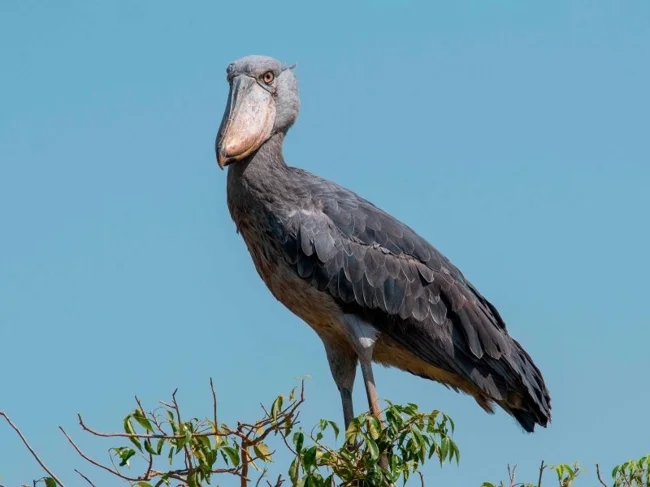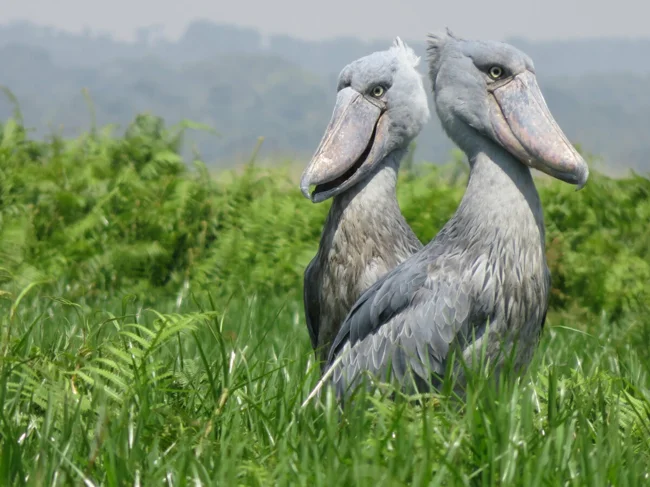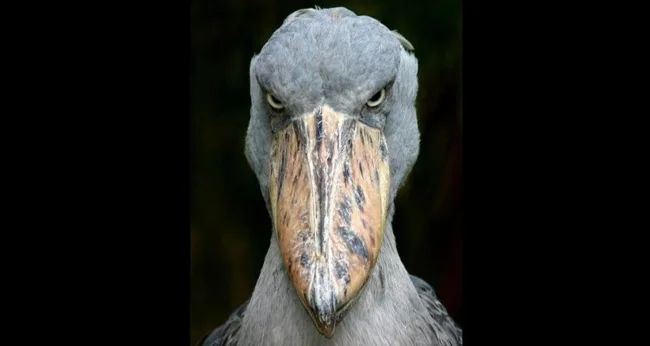Shoebill evokes both admiration and horror. This inhabitant of the swamps of Central Africa is amazing in everything from behavior to body structure. 
The first to learn about the wonderful bird was the German explorer and diplomat Ferdinand Vernet when he found himself at Lake No during an African expedition. But this is one of the reservoirs of the Sudd swamp, which was located on the territory of what is now South Sudan.
Vernet was with a guide, who told him about a miracle bird with a beak similar to a pelican. And 10 years later, Musfield Parkins, a collector, brought two shoebills to the UK so that zoologists could study the bird more closely. 
Scientists began to classify the royal heron and for several decades could not come to a consensus - it was a stork or a heron, due to the mixture of features of the two species. As a result, having examined the miracle bird from all sides, they attributed it to the pelican family, which includes herons. 
An adult shoebill is approximately 120 cm tall and weighs between 4 and 7 kg. The bird's wingspan is more than two meters, and the most remarkable thing about the shoebill is its gaze, which literally looks into the soul of everyone who meets it. The impressive beak looks menacing, and the chirping of the royal heron is extremely similar to the sounds made by the Predator from a series of science fiction films.
In general, the shoebill's vocabulary is wide - there are clicks, moos, and squeaks.
Unlike most birds, whose eyes are located on the sides, the royal heron has them forward. Therefore, he sees the world as three-dimensional. And it can stand absolutely still for hours, stalking its prey (to the delight of nature photographers, who can take plenty of pictures of the bird). In the Walsorde bird park (Germany), there is even a sign on his cage: “Er bewegt sich doch” (“He still moves”). The shoebill's main diet is frogs and fish with small reptiles. But if he really wants to, he can also feast on baby crocodiles.
Although the shoebill is quite aggressive in the wild, in captivity it has proven to be friendly and amenable to simple training.
Shoebills are rarely represented in zoos, but those that are shown have gradually become comfortable among people, so much so that they are even allowed to roam free and interact with visitors. It is not recommended to communicate too actively with them, but there is one funny trick that wins over the bird: bow to it when you meet it, and then the shoebill will bow in return. Just like the hippogriffs in the Harry Potter series.

Birds reach puberty only at three to four years of age. They are monogamous, but the family prefers to live separately outside the breeding season. And when nesting begins, they meet and build a large, cozy home (2.5 meters) from reeds, papyrus stems and grass. Despite its impressive size, the heron perfectly hides it from predators.
The female lays no more than three eggs, but usually only one chick survives. Moreover, the number of offspring does not depend on whether the shoebill lives in captivity or not. In captivity it is even worse - over the last hundred years only two chicks have survived in zoos. The rare bird has become a desirable commodity on the black market - in Saudi Arabia or Dubai they are willing to pay more than ten thousand dollars for a live shoebill.

The number of adult royal herons in the wild is small - 3300-3500 individuals and, based on data from the International Union for Conservation of Nature, their number is decreasing. The threat is not only poachers, but the destruction of the bird’s habitat.
The wetlands of Central Africa are subject to pollution, oil and gas development, regular fires, and increased exploitation by farming.

In addition to modern interference, there were also beliefs of African tribes, for whom the shoebill has long been considered a harbinger of misfortune and they have been “cleansing” the lands of these magical birds for hundreds of years.
The royal heron is today protected by wildlife organizations. The shoebill's habitat is patrolled by officers in Uganda, Zambia, South Sudan and Tanzania to monitor potential poachers.
